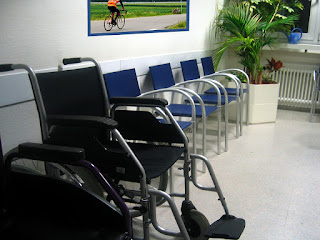 |
| Image Credit: Pixabay |
Author: Victoria Weston, MD
Originally Published: Common Sense November/December 2015
I could feel her eyes on me, burning with anger. It was a hot July day and she had been waiting for hours in our crowded waiting room, and then waited even longer in our ENT room in an upright, unforgiving chair as our team cared for multiple unstable patients who had been roomed shortly after sign-out. The ED was packed with patients, new interns, and other new learners — and everything seemed to be moving so much more slowly than just a few weeks before.
When I walked into her room, I entered with a smile, made eye contact, introduced myself, and made my apologies: I am so sorry for the wait. I am glad that you came in today and appreciate your patience. I know that it has been a long wait, but I am here now and am totally focused on you. How can I help you today?
As I waited for her response and anticipated a barrage of complaints, I wondered internally for a moment if I was being clichéd. I was repeating a script I’d memorized, internalized. I did genuinely want to have a good interaction with her and for her to not be upset. To my pleasant surprise, my opening set the tone for our whole interaction. Ten minutes later she was laughing and smiling, telling me about her son, a resident training in a primary care field, and how much she enjoyed teaching public school. She seemed genuinely happy and satisfied with her care. It was one of the best patient interactions I’d had the entire day, and it felt good to connect. It was about more than just patient satisfaction and Press-Ganey surveys. It was about professional satisfaction too.
People often talk about mindfulness, being present, and being in the moment. It sounds obvious and simplistic in theory, but is not always easily done. Being mindful is challenging in most circumstances, particularly those we face in a busy emergency department, with its frequent distractions and many demands for our time and attention. It is an issue which I still find challenging, but I continue to try my best to pause and reset. I try to focus on the person in front of me without my mind wandering to my other patients, the waiting room, and the lengthy to-do list of tasks waiting outside the door.
Sometimes on a hectic day it can be hard to be positive and keep perspective. Maybe you just had a frustrating conversation with a consultant. Maybe you just ran a code and pronounced someone. Maybe you haven’t had time to eat, or to sit down and really think. Sometimes people are difficult, sometimes the physical and emotional fatigue begins to set in after a long shift.
However, I have found that I provide better medical care and have improved day-to-day satisfaction when I try to give each person a fresh start. Setting a good tone from the start of the patient encounter sets the tone for the entire interaction. It is not just eye contact or shaking hands. It is acknowledging the patient’s significant other who is also in the room. It is meeting people where they are. It is dropping your mental baggage at the door and really listening. To me, mindfulness is not necessarily a way of life, but a reminder to pay attention and be focused. I certainly don’t claim to be an expert, and I am continuing to develop my practice style and striving to be a better physician. Nevertheless, I will keep trying to maintain my focus, be a better listener, and be a more present and attentive physician.
